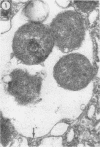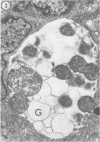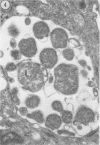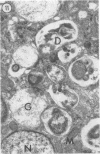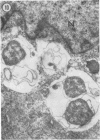Abstract
The developmental cycle of a genital tract Chlamydia (MRC-1/G) growing in irradiated monkey kidney cell monolayers was analyzed by electron microscopy. Growth was essentially similar to that of C. psittaci and ocular isolates of C. trachomatis. Penicillin (50 units/ml) interfered with the growth cycle by producing greatly enlarged initial bodies which sometimes measured 3 μm instead of the normal 1 to 1.3 μm in diameter. In contrast to penicillin, chlortetracycline (10 μg/ml) did not grossly distort morphology of the initial body but had a definite inhibitory effect on the formation of elementary bodies depending upon the time postinfection the antibiotic was added. If added 24 hr or later postinfection, typical inclusions containing elementary bodies were formed. When administered 18 hr postinfection, the transition of initial bodies to elementary bodies was prevented, and the inclusion was much smaller when examined at 48 hr in comparison to a control without chlortetracycline. Addition of the drug at 6 or 12 hr postinfection resulted in very small inclusions which contained only one or two chlamydiae of an initial body type. It was not possible to detect chlamydiae when chlortetracycline was added immediately after adsorption (0 hr), and cells were examined by light and electron microscopy at 48 hr.
Full text
PDF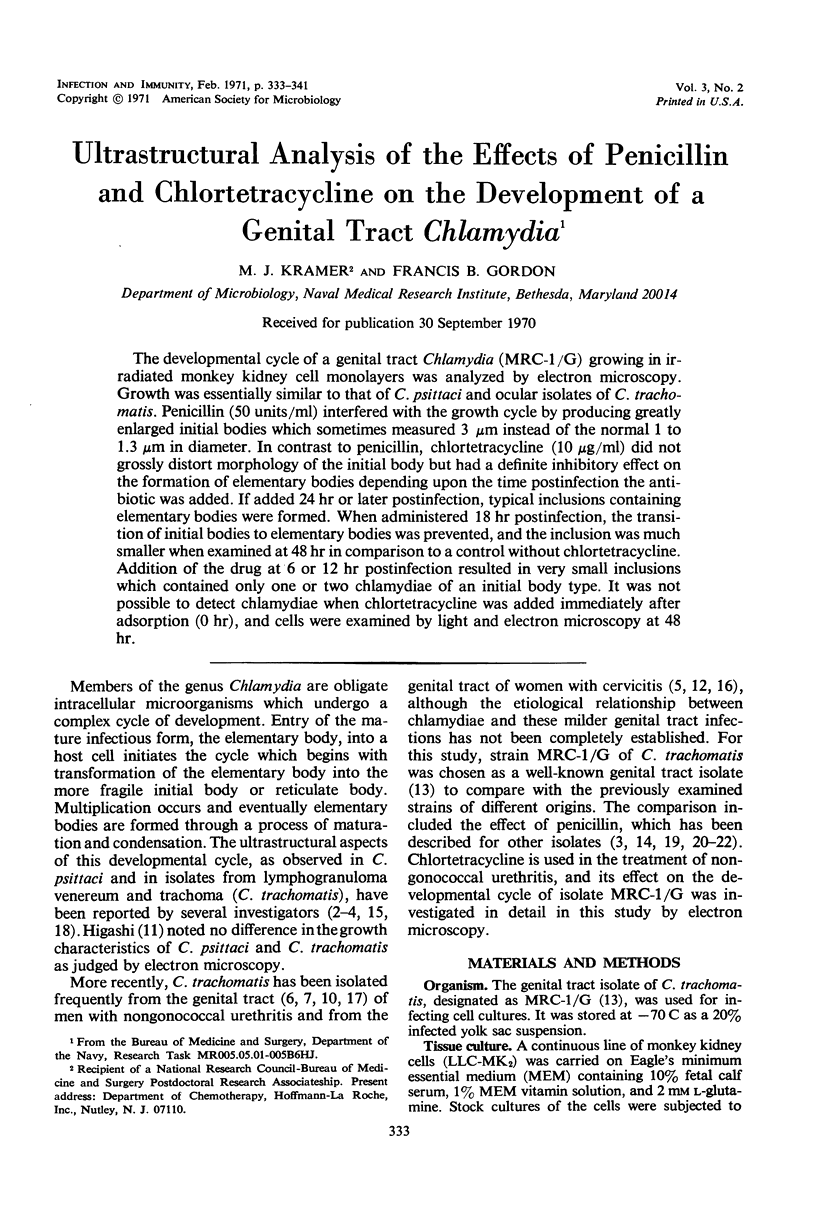
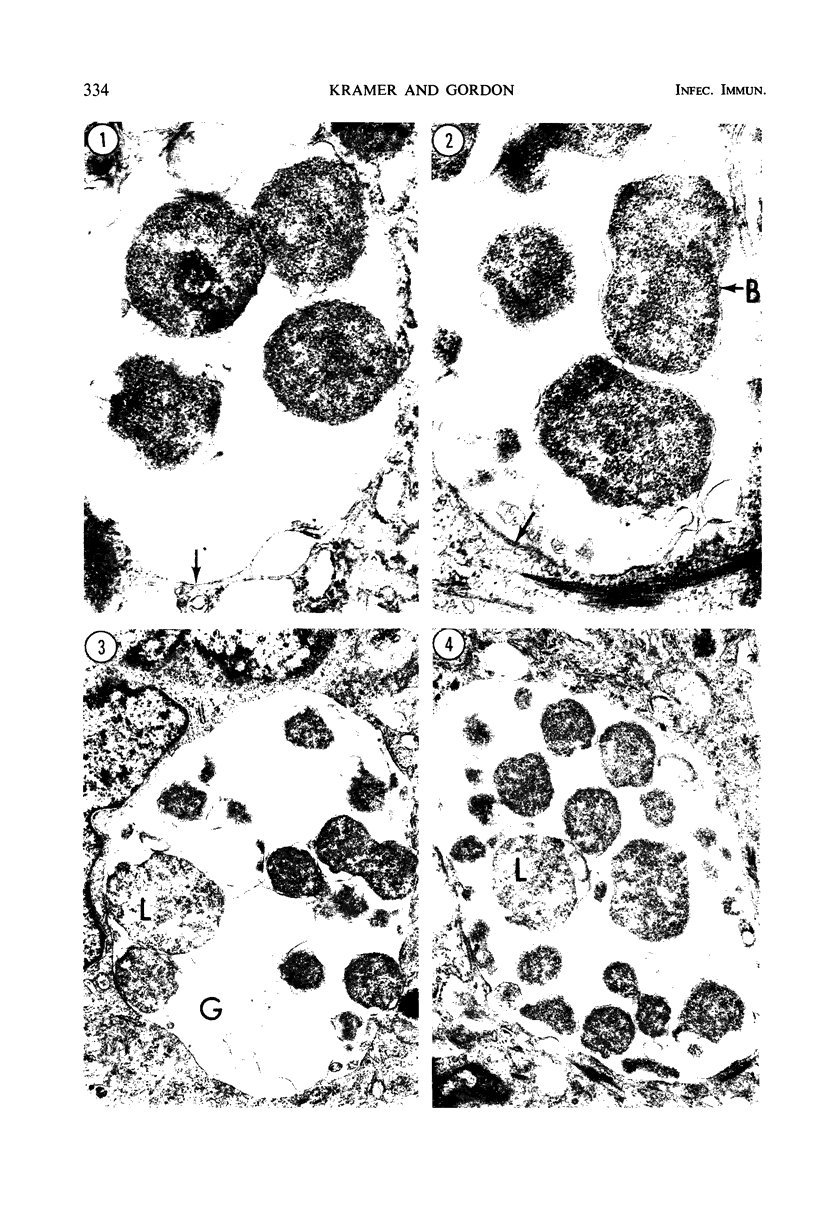
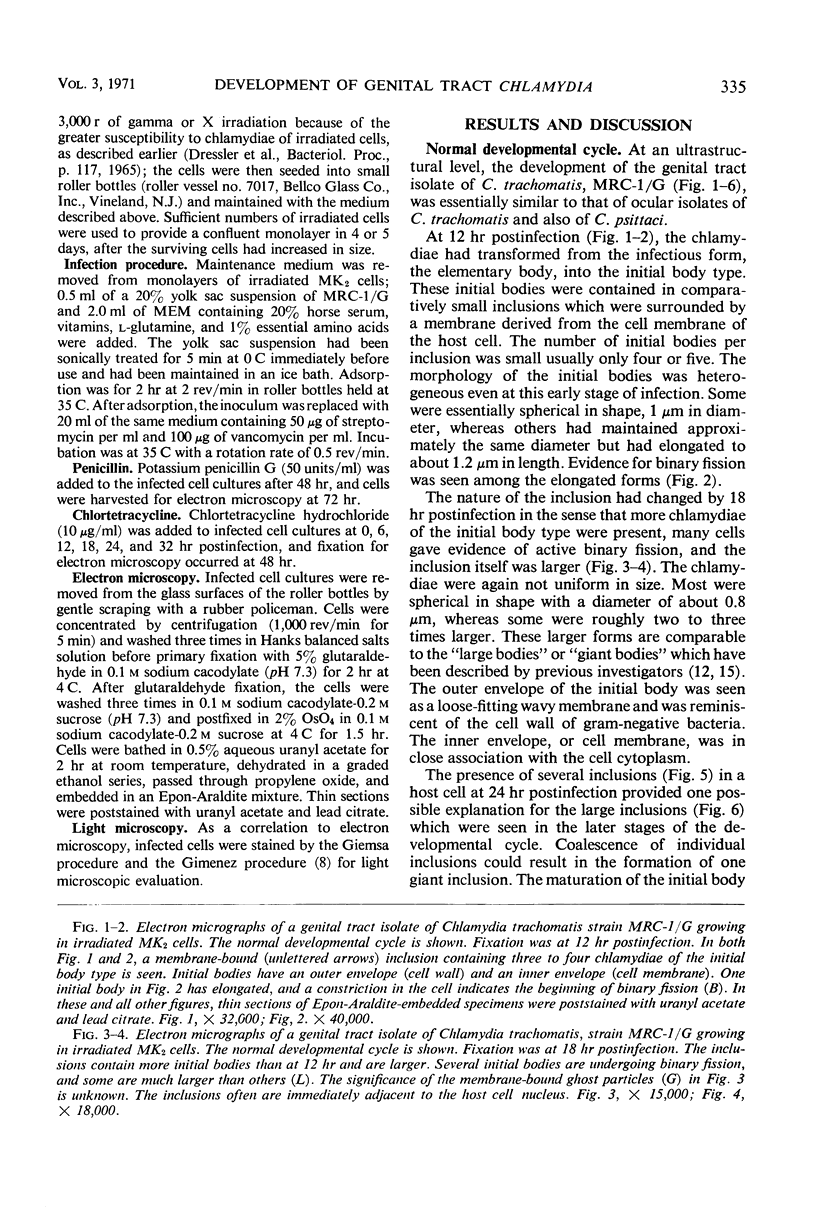
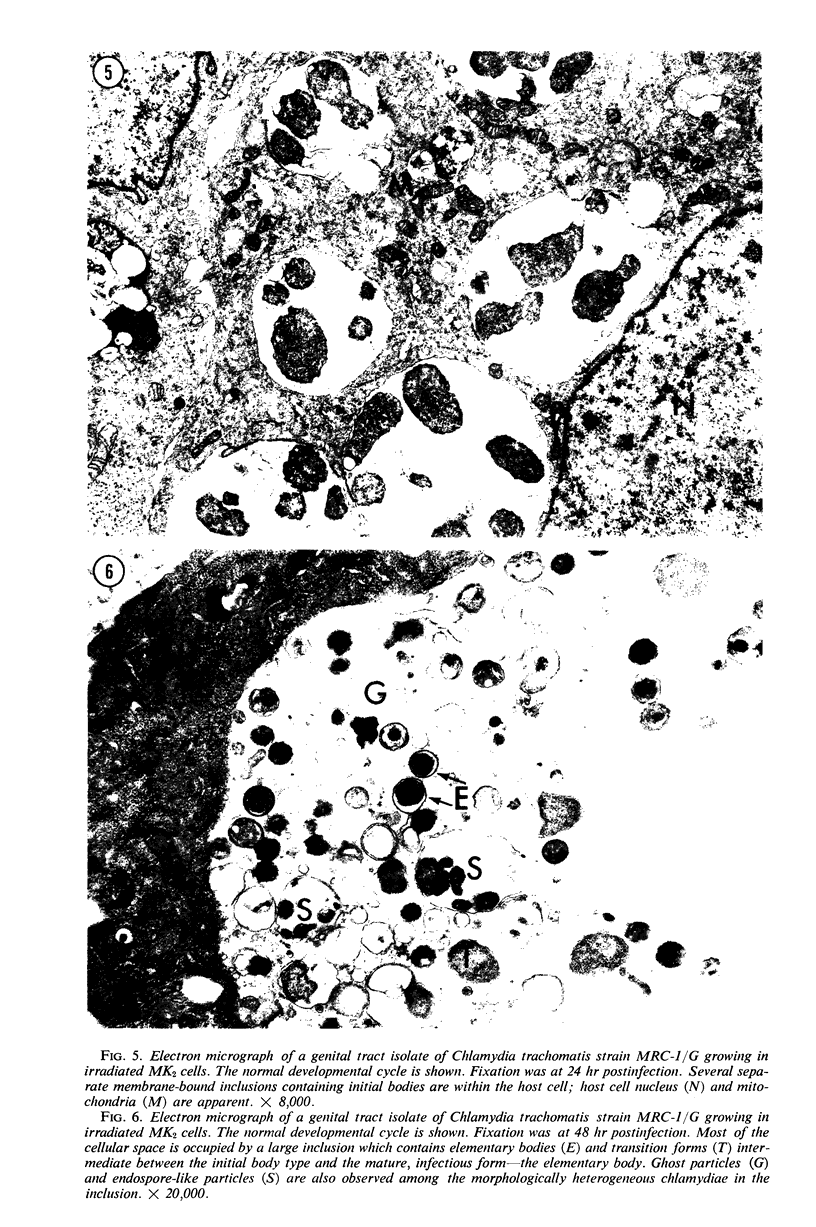
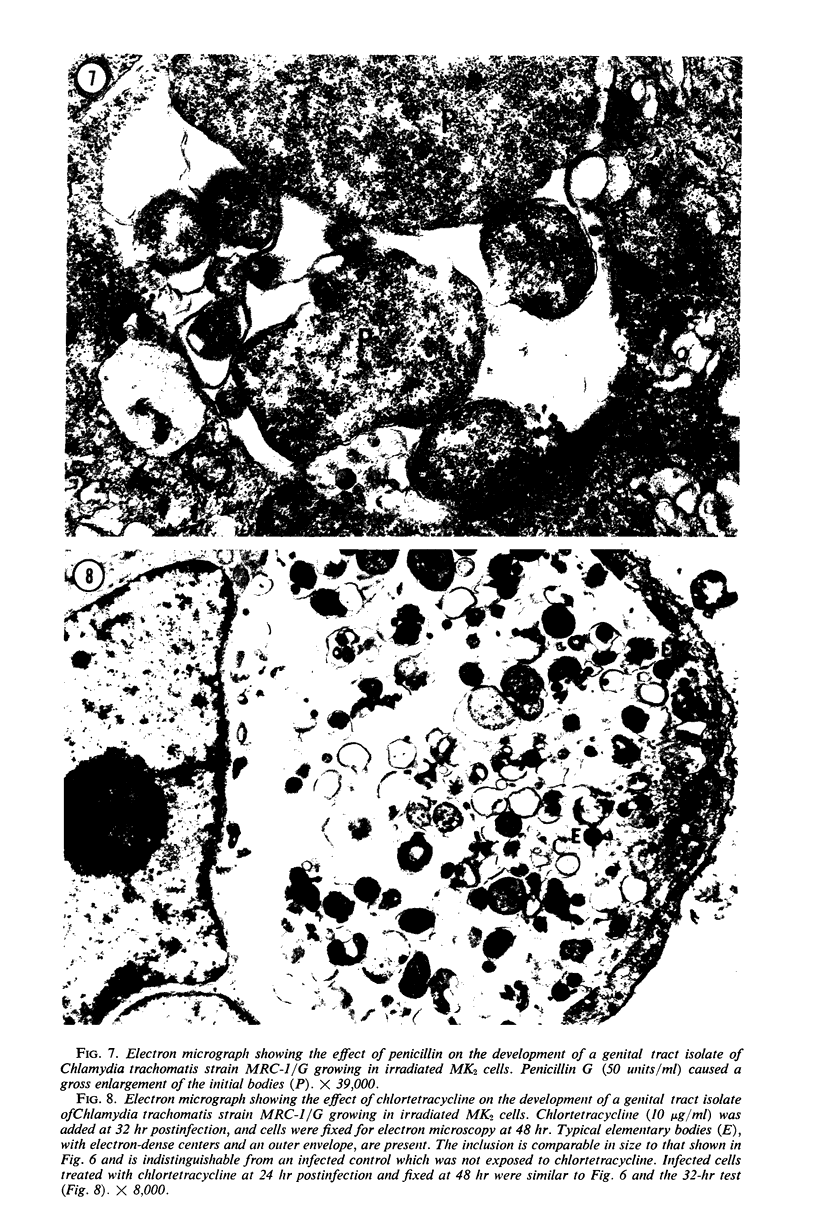
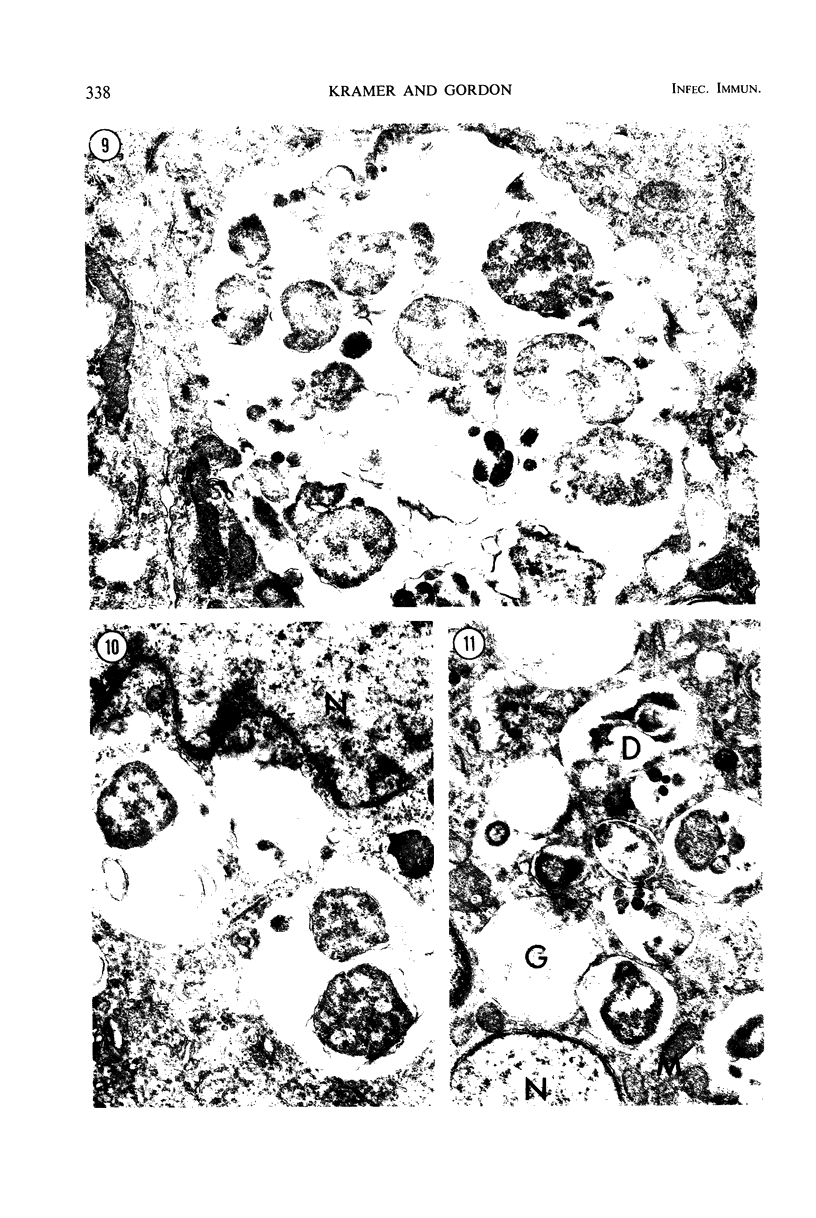
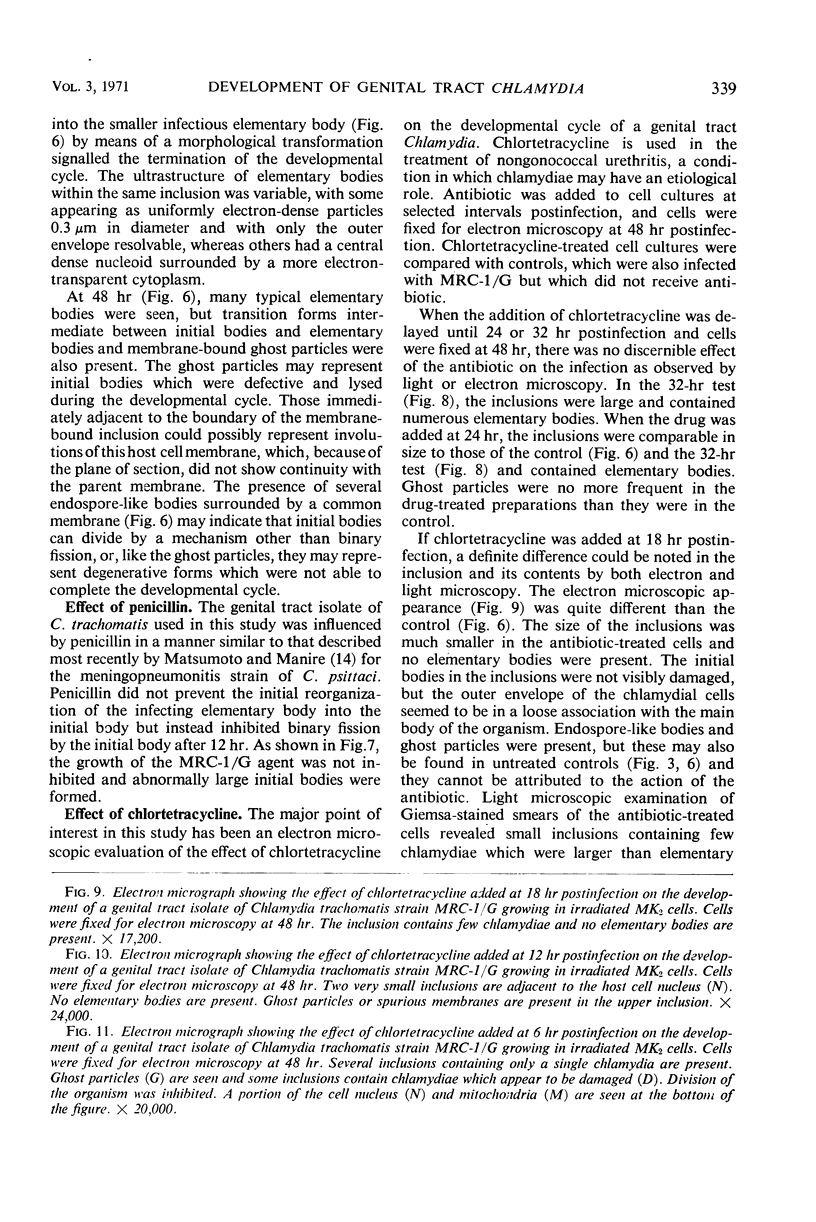
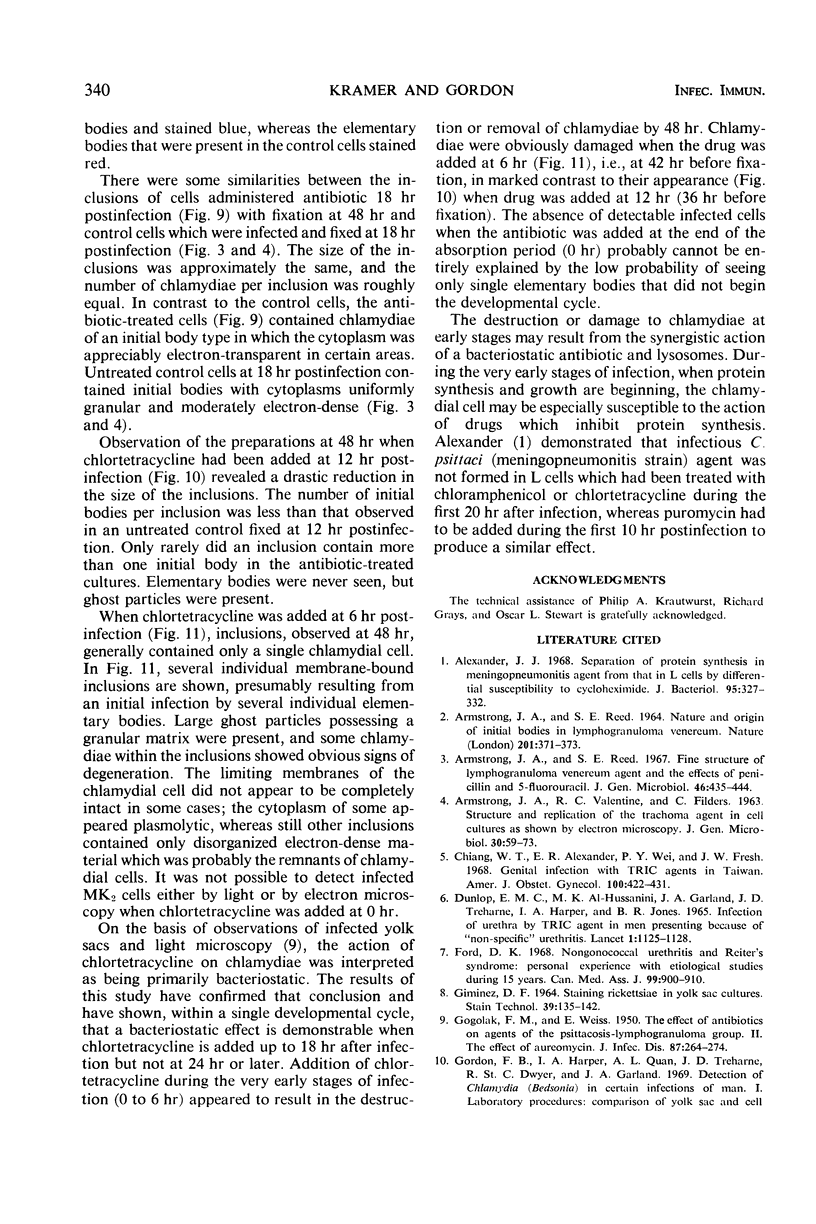
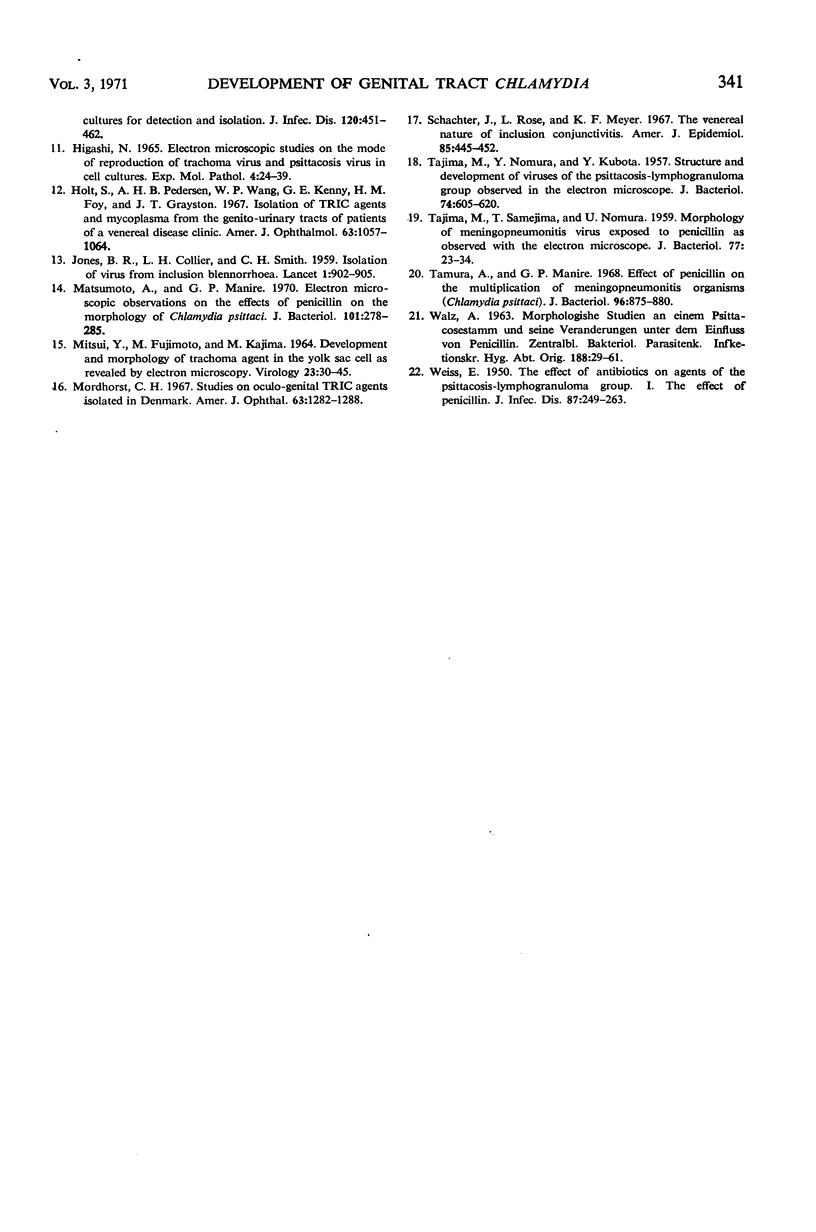
Images in this article
Selected References
These references are in PubMed. This may not be the complete list of references from this article.
- ARMSTRONG J. A., REED S. E. NATURE AND ORIGIN OF INITIAL BODIES IN LYMPHOGRANULOMA VENEREUM. Nature. 1964 Jan 25;201:371–373. doi: 10.1038/201371a0. [DOI] [PubMed] [Google Scholar]
- Alexander J. J. Separation of protein synthesis in meningopneumonitisgent from that in L cells by differential susceptibility to cycloheximide. J Bacteriol. 1968 Feb;95(2):327–332. doi: 10.1128/jb.95.2.327-332.1968. [DOI] [PMC free article] [PubMed] [Google Scholar]
- Chiang W. T., Alexander E. R., Wei P. Y., Fresh J. W. Genital infection with TRIC agents in Taiwan. Am J Obstet Gynecol. 1968 Feb 1;100(3):422–431. doi: 10.1016/s0002-9378(15)33709-1. [DOI] [PubMed] [Google Scholar]
- DUNLOP E. M., AL-HUSSAINI M. K., GARLAND J. A., TREHARNE J. D., HARPER I. A., JONES B. R. INFECTION OF URETHRA BY TRIC AGENT IN MEN PRESENTING BECAUSE OF "NON-SPECIFIC" URETHRITIS. Lancet. 1965 May 29;1(7396):1125–1128. doi: 10.1016/s0140-6736(65)91954-9. [DOI] [PubMed] [Google Scholar]
- Ford D. K. Non-gonococcal urethritis and Reiter's syndrome: personal experience with etiological studies during 15 years. Can Med Assoc J. 1968 Nov 9;99(18):900–910. [PMC free article] [PubMed] [Google Scholar]
- GIMENEZ D. F. STAINING RICKETTSIAE IN YOLK-SAC CULTURES. Stain Technol. 1964 May;39:135–140. doi: 10.3109/10520296409061219. [DOI] [PubMed] [Google Scholar]
- GOGOLAK F. M., WEISS E. The effect of antibiotics on agents of the psittacosis-lymphogranuloma group. J Infect Dis. 1950 Nov-Dec;87(3):264–274. doi: 10.1093/infdis/87.3.264. [DOI] [PubMed] [Google Scholar]
- HIGASHI N. ELECTRON MICROSCOPIC STUDIES ON THE MODE OF REPRODUCTION OF TRACHOMA VIRUS AND PSITTACOSIS VIRUS IN CELL CULTURES. Exp Mol Pathol. 1965 Feb;76:24–39. doi: 10.1016/0014-4800(65)90021-3. [DOI] [PubMed] [Google Scholar]
- Holt S., Pedersen A. H., Wang S. P., Kenny G. E., Foy H. M., Grayston J. T. Isolation of TRIC agents and mycoplasma from the genito-urinary tracts of patients of a venereal disease clinic. Am J Ophthalmol. 1967 May;63(5 Suppl):1057–1064. doi: 10.1016/0002-9394(67)94083-4. [DOI] [PubMed] [Google Scholar]
- JONES B. R., COLLIER L. H., SMITH C. H. Isolation of virus from inclusion blennorrhoea. Lancet. 1959 May 2;1(7079):902–905. doi: 10.1016/s0140-6736(59)91307-8. [DOI] [PubMed] [Google Scholar]
- MITSUI Y., FUJIMOTO M., KAJIMA M. DEVELOPMENT AND MORPHOLOGY OF TRACHOMA AGENT IN THE YOLK SAC CELL AS REVEALED BY ELECTRON MICROSCOPY. Virology. 1964 May;23:30–45. doi: 10.1016/s0042-6822(64)80005-2. [DOI] [PubMed] [Google Scholar]
- Matsumoto A., Manire G. P. Electron microscopic observations on the effects of penicillin on the morphology of Chlamydia psittaci. J Bacteriol. 1970 Jan;101(1):278–285. doi: 10.1128/jb.101.1.278-285.1970. [DOI] [PMC free article] [PubMed] [Google Scholar]
- Mordhorst C. H. Studies on oculogenital TRIC agents isolated in Denmark. Am J Ophthalmol. 1967 May;63(5 Suppl):1282–1288. doi: 10.1016/0002-9394(67)94113-x. [DOI] [PubMed] [Google Scholar]
- Schachter J., Rose L., Meyer K. F. The venereal nature of inclusion conjunctivitis. Am J Epidemiol. 1967 May;85(3):445–452. doi: 10.1093/oxfordjournals.aje.a120706. [DOI] [PubMed] [Google Scholar]
- TAJIMA M., NOMURA Y., KUBOTA Y. Structure and development of viruses of the psittacosis-lymphogranuloma group observed in the electron microscope. J Bacteriol. 1957 Nov;74(5):605–620. doi: 10.1128/jb.74.5.605-620.1957. [DOI] [PMC free article] [PubMed] [Google Scholar]
- TAJIMA M., SAMEJIMA T., NOMURA Y. Morphology of meningopneumonitis virus exposed to penicillin as observed with the electron microscope. J Bacteriol. 1959 Jan;77(1):23–34. doi: 10.1128/jb.77.1.23-34.1959. [DOI] [PMC free article] [PubMed] [Google Scholar]
- Tamura A., Manire G. P. Effect of penicillin on the multiplication of meningopneumonitis organisms (Chlamydia psittaci). J Bacteriol. 1968 Oct;96(4):875–880. doi: 10.1128/jb.96.4.875-880.1968. [DOI] [PMC free article] [PubMed] [Google Scholar]
- WEISS E. The effect of antibiotics on agents of the psittacosis-lymphogranuloma group. I. The effect of penicillin. J Infect Dis. 1950 Nov-Dec;87(3):249–263. doi: 10.1093/infdis/87.3.249. [DOI] [PubMed] [Google Scholar]







